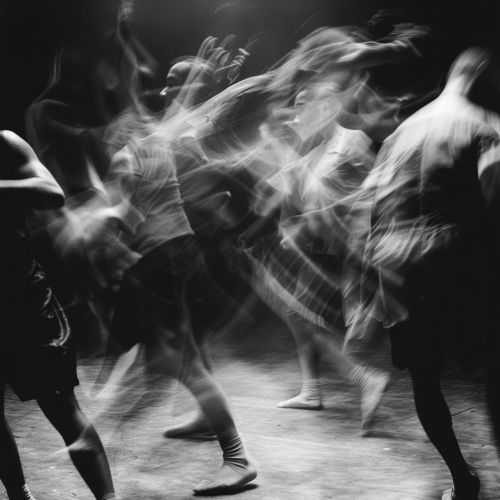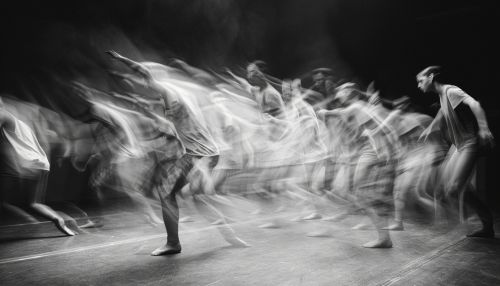Merce Cunningham Dance Company
History
The Merce Cunningham Dance Company was founded in 1953 by Merce Cunningham, an American dancer and choreographer who was at the forefront of American modern dance for more than 50 years. The company was a platform for Cunningham's choreographic exploration and innovation, and it played a critical role in the development of contemporary dance worldwide.


Cunningham's approach to dance was groundbreaking in its disregard for traditional narrative structures and its emphasis on pure movement as the primary expressive element. His work was characterized by a rigorous technique, a novel use of space and time, and the independent use of music and design elements. The company was renowned for its collaborations with leading artists, architects, designers, and musicians.
Artistic Philosophy
Cunningham's artistic philosophy was rooted in his belief in the autonomy of dance. He viewed dance as an art form that should not be bound by the constraints of narrative, music, or any other external factors. This philosophy was reflected in his choreographic method, which often involved the use of chance procedures to determine the sequence of movements, the spatial arrangement of the dancers, and the timing of the dance.
Cunningham's use of chance was influenced by his long-time collaborator, composer John Cage. Cage's use of indeterminacy and chance in music had a profound impact on Cunningham's approach to choreography. The two artists often worked independently, with Cage creating the music and Cunningham the dance, only bringing the two elements together in the final stages of the creative process.
Choreographic Method
Cunningham's choreographic method was unique and innovative. He used a technique called "choreography by chance," in which he would determine the sequence of movements, the spatial arrangement of the dancers, and the timing of the dance by chance procedures, such as tossing coins or rolling dice. This method allowed him to break free from traditional narrative structures and to explore new possibilities in movement and composition.
Cunningham also made extensive use of technology in his choreographic process. He was one of the first choreographers to use the computer program LifeForms to create and analyze dance movements. This allowed him to visualize and experiment with complex spatial arrangements and movement sequences before bringing them into the studio.
Collaborations
The Merce Cunningham Dance Company was known for its collaborations with leading artists, architects, designers, and musicians. These collaborations were an integral part of Cunningham's artistic vision, and they contributed to the multidisciplinary nature of his work.
Among the artists who collaborated with the company were visual artists Robert Rauschenberg and Jasper Johns, composer David Tudor, and architect Frank Gehry. These collaborations often resulted in innovative set designs, costumes, and soundscapes that added a unique dimension to Cunningham's choreography.
Legacy
The Merce Cunningham Dance Company disbanded in 2011, following Cunningham's death in 2009. However, its influence continues to be felt in the world of contemporary dance. Many of Cunningham's dances have been preserved and are still performed by dance companies around the world. In addition, the Merce Cunningham Trust continues to promote Cunningham's work through educational programs, licensing of his dances, and support for new productions.
